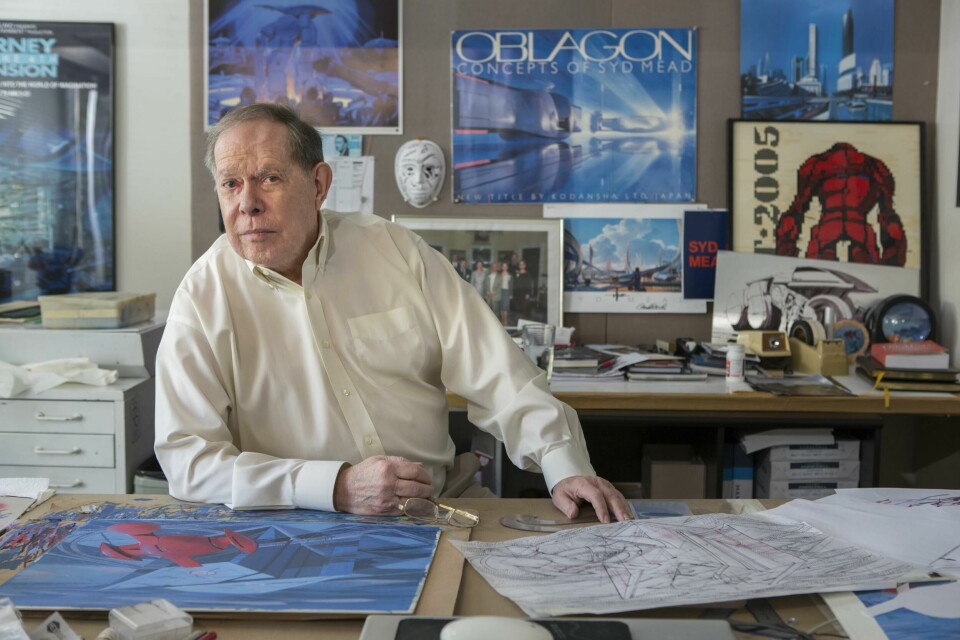
The Timeless Relevance of Syd Mead
A retrospective on one of the most distinctive and inspirational designers we’ve ever seen.
Of all the litmus tests in the design world, the most important one is time. It can reveal which works were flavour-of-the-moment and which have transcended their sell-by dates. When it comes to designers themselves, the passage of time can also be quite illuminating. Some creative icons, revered as they are, become trapped in the amber of their respective eras.
Not so with the subject of this Design Essay, the incomparable Sydney Jay Mead. As the acclaimed visual futurist begins to wind down his career, it’s important to take stock of why his body of work continues to be relevant after all this time – and will continue to be for future generations.
It is impossible to be objective when reflecting on the accomplishments of Syd Mead. The very nature of his work makes any honest reflection an emotional one, and thus, a subjective one. Indeed, most designers and students can recall, with passion, the first time they saw Mead’s work. Like a first kiss under a boardwalk or a sudden burst of adrenaline, it’s a moment they do not forget. The late Imre Molnar once told this writer that seeing an installation of Mead’s paintings felt like a religious experience. In any other context, this would seem like hyperbole, but here it is appropriate.
Flash forward to those nights when we’ve run out of juice or are simply bewildered by the political side of the design business; with a visit to a bookshelf, or a click on a Flickr album, Mead’s catalogue sends our spirits soaring again. In mere moments, the fever – the reason we chose this profession in the first place – begins to come back. This is such an important thing to remember: the fact that Mead’s work inspires wave after wave of designers and students; often at times when they need that inspiration the most.
There are precious few artists in the world whose creative voice is so uniquely theirs, that there is nary a chance of mistaking them for someone else. Nobody, for example, would confuse Andy Warhol with another pop art figure. Few portrait artists, try as they might, can capture the soul of a person like John Singer Sargent. Mead is similarly legendary for his creative voice. It doesn’t matter if you are looking at Oblagon, Sentury II, a Studio Image softcover or a US Steel promotional book. It’s Syd, full stop. And against the present-day backdrop of Pinterest and Instagram, here is a salient point: In the race to find the latest viscom technique or achieve the hot sketch, we often forget a key reason why work like Mead’s is “hot” to begin with. Because it’s not like everything else. It has its own voice, which should remind us to strive for the same distinction in our own work.
As other-worldly as Mead’s catalogue has been, the tools of his trade have been largely terrestrial. This may, in fact, be a crucial part of his work’s lasting allure: the dichotomy of an analogue medium (gouache) and the pursuit of visual futurism. For the digital generation, the idea that such amazing scenes can be achieved with opaque pigment on illustration board is, in their parlance, mind-blowing (I have witnessed these reactions time and again, much to my amusement). But critically, it is a reaction that opens the mind to new possibilities – and makes us want to demand a similar level of technical excellence from ourselves. Digital tools will come and go, but the importance of craft will never go away. This is evident in nearly every piece to which Mead signs his name, and the kids, we’re happy to say, get it.
So, hang on to those rare books and Flickr album links. For many of us, they are something of a moral compass in our creative lives. A beacon that keeps us on a positive, inspiring path. As time marches on, the relevance of Syd Mead should march right along with it.
Jason White is an Assistant Professor of Transportation Design at the College for Creative Studies in Detroit, and a Contributor to Car Design News.


















